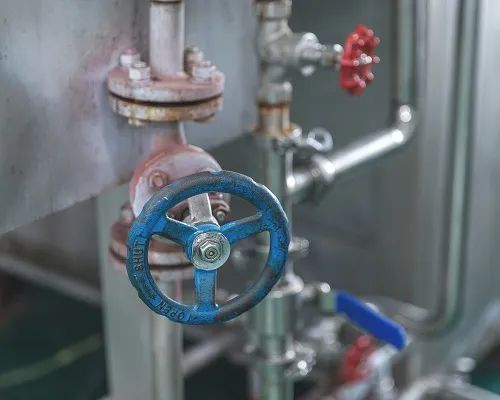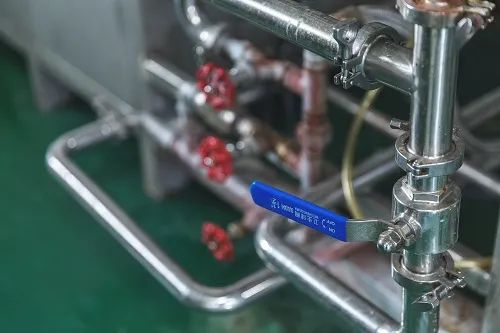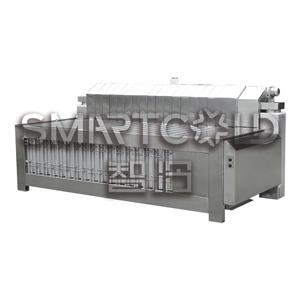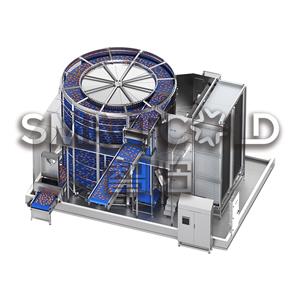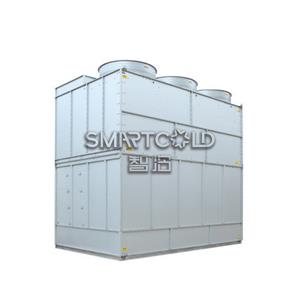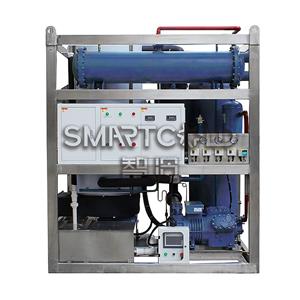Fourteen taboos for valve installation! But pay attention!
Installing a valve is not an easy task. There are fourteen taboos, you all know? What are the consequences if these taboos are violated? How to solve it?
Taboo one In winter construction, hydraulic pressure test shall be carried out at negative temperature. 1. Consequences: Due to the rapid freezing of the tube during the hydrostatic test, the tube was frozen. 2. Measures: Try to carry out the water pressure test before the construction in winter, and blow the water after the pressure test, especially the water in the valve must be cleaned, otherwise the valve will freeze and crack. When the water pressure test is carried out in winter, the project must be carried out at a positive indoor temperature (above 0 ℃), and the water should be blown out after the pressure test. When the hydrostatic test cannot be carried out, the test can be carried out with compressed air. Taboo II Before the completion of the pipeline system, the flushing is not serious, and the flow and speed cannot meet the requirements of pipeline flushing. Even flushing is replaced by water pressure test drainage. 1. Consequences: The water quality does not meet the operating requirements of the pipeline system, which often results in the reduction or blockage of the pipeline section. 2. Measures: Flush with the maximum design flow in the system or a water flow speed that should not be less than 3m/s. The water color and transparency of the outlet should be visually consistent with the water color and transparency of the inlet water. Taboo three Sewage, rainwater and condensate pipes are concealed without a closed water test. 1. Consequences: May cause water leakage and cause loss to the user. 2. Measures: The closed water test work should be checked and accepted in strict accordance with the specifications. Buried underground, in the ceiling, between pipes and other hidden sewage, rainwater, condensate pipes, etc. should be installed to ensure no leakage. Taboo Four In the hydraulic strength test and tightness test of the pipeline system, only the pressure value and the water level change are observed, and the leakage inspection is not enough. 1. Consequences: Leakage occurs after the operation of the pipeline system, which affects the normal use. 2. Measures: When the pipeline system is tested according to the design requirements and construction specifications, in addition to recording the pressure value or water level change within the specified time, it is especially necessary to carefully check whether there is any leakage problem. Taboo Five Common valve flanges are used for butterfly valve flanges. 1. Consequences: Butterfly valve flanges are different in size from ordinary valve flanges. Some flanges have a small inner diameter, while the disc of the butterfly valve is large, resulting in failure to open or hard opening and damage to the valve. 2. Measures: The flange plate should be processed according to the actual size of the butterfly valve flange. Taboo Six There are no reserved holes and embedded parts in the construction of the building structure, or the size of the reserved holes is too small and the embedded parts are not marked. 1. Consequences: In the construction of heating and sanitary engineering, the building structure is chiseled, and even the stressed steel bars are cut off, which affects the safety performance of the building. 2. Measures: Familiarize yourself with the construction drawings of the heating and sanitary engineering, and actively cooperate with the construction of the building structure to reserve holes and embedded parts according to the needs of the installation of pipes and supports and hangers, and refer to the design requirements and construction specifications for details. Taboo Seven When the pipes are welded, the staggered ends of the pipes are not on the same center line after the counterparts, no gaps are left for the counterparts, and the thick-walled pipes are not shoveled, and the width and height of the welds do not meet the requirements of the construction specification. 1. Consequences: The misalignment of the pipe directly affects the welding quality and appearance quality. No gap is left between the counterparts, thick-walled pipes are not shoveled, and the welding seam width and height do not meet the requirements. 2. Measures: After welding the pipes, the pipes should not be misaligned. They should be on the same center line, and there should be a gap between the counterparts. Thick-walled pipes should be beveled. In addition, the width and height of the weld should be welded according to the requirements of the specification. Taboo Eight The pipeline is directly buried on the frozen soil and untreated loose soil, and the spacing and position of the pipeline piers are improper, even in the form of dry yard bricks. 1. Consequences: Due to the unstable support, the pipeline was damaged during the backfill compaction process, resulting in rework and repair. 2. Measures: Pipes shall not be buried on frozen soil and untreated loose soil. The spacing of buttresses shall meet the requirements of construction specifications, and the support pads shall be firm, especially at the pipe joints, which shall not be subjected to shearing force. Brick buttresses shall be built with cement mortar to ensure integrity and firmness. Taboo Nine 1. Consequences: The pipeline support is loose, the pipeline is deformed, or even falls off. 2. Measures: Expansion bolts must be qualified products. If necessary, samples should be taken for test inspection. The diameter of the installation expansion bolts should not be greater than the outer diameter of the expansion bolts by 2mm. The expansion bolts should be used on concrete structures. Taboo Ten The flanges and gaskets of the pipeline connection are not strong enough, and the connecting bolts are short or small in diameter. Rubber pads are used for heat pipes, asbestos pads are used for cold water pipes, and double-layer pads or bevel pads are used, with flange gaskets protruding into the pipes. 1. Consequences: The flange connection is not tight, or even damaged, and leakage occurs. Flange gaskets protrude into the pipe, increasing the resistance to water flow. 2. Measures: (1) The flanges and gaskets used for the pipeline must meet the requirements of the design working pressure of the pipeline. (2) Rubber asbestos gaskets should be used for flange gaskets of heating and hot water supply pipes; rubber gaskets should be used for flange gaskets of water supply and drainage pipes. (3) The gasket of the flange shall not protrude into the pipe, and its outer circle should reach the bolt hole of the flange. No inclined surface pads or several pads shall be placed in the middle of the flange. The diameter of the bolt of the connecting flange should be less than 2mm than the diameter of the flange plate, and the length of the nut protruding from the bolt rod should be 1/2 of the thickness of the nut. Taboo Eleven Valve installation method is wrong. For example, the water (steam) flow direction of the globe valve or check valve is opposite to the sign, the valve stem is installed downward, the horizontally installed check valve is installed vertically, the handle of the rising stem gate valve or butterfly valve has no opening or closing space, and the valve stem of the concealed valve is installed. Not towards the inspection door. 1. Consequences: The valve fails, the switch is difficult to repair, and the valve stem is down, which often causes water leakage. 2. Measures: Strictly follow the valve installation instructions for installation. For the rising stem gate valve, leave enough valve stem to extend the opening height. Butterfly valve fully considers the handle rotation space. Various valve stems cannot be lower than the horizontal position, let alone downward. For concealed valves, not only should an inspection door meet the needs of valve opening and closing, but also the valve stem should face the inspection door. Taboo Twelve For example, the nominal pressure of the valve is less than the system test pressure; the gate valve is used for the water supply branch pipe when the pipe diameter is less than or equal to 50mm; the stop valve is used for the dry and riser pipes of hot water heating; the butterfly valve is used for the suction pipe of the fire pump. 1. Consequences: Affect the normal opening and closing of the valve and adjust the resistance, pressure and other functions. Even caused the valve to be damaged and forced to be repaired during the operation of the system. 2. Measures: (1) Familiar with the application range of various valves, and select the specifications and models of the valve according to the design requirements. (2) The nominal pressure of the valve should meet the requirements of the system test pressure. (3) According to the requirements of construction specifications: if the diameter of the water supply branch pipe is less than or equal to 50mm, a globe valve should be used; when the pipe diameter is greater than 50mm, a gate valve should be used. (4) Gate valves should be used for hot water heating, dry and vertical control valves, and butterfly valves should not be used for suction pipes of fire pumps. Taboo Thirteen The necessary quality inspections are not carried out as required before the valve is installed. 1. Consequences: During the operation of the system, the valve switch is not flexible, the closing is not strict and water (steam) leakage occurs, resulting in rework and repair, and even affecting the normal water supply (steam). 2. Measures: Before the valve is installed, the compressive strength and tightness test should be done. For the test, 10% of the quantity of each batch (same brand, same specification, same model) shall be randomly checked, and not less than one. For the closed-circuit valve installed on the main pipe to cut off, the strength and tightness test shall be carried out one by one. The strength and tightness test pressure of the valve shall comply with the "Code for Acceptance of Construction Quality of Building Water Supply and Drainage and Heating Engineering" (GB 50242-2002). Taboo Fourteen The main materials, equipment and products used in the construction lack technical quality appraisal documents or product qualification certificates that meet the current standards issued by the state or the ministry. 1. Consequences: The quality of the project is not up to standard, there are hidden dangers of accidents, and it cannot be delivered and used on schedule, so it must be reworked and repaired; it will cause delays in the construction period and increase the input of labor and materials. 2. Measures: The main materials, equipment and products used in water supply and drainage and heating and sanitary projects should have technical quality appraisal documents or product qualification certificates that meet the current standards issued by the state or the Ministry; they should be marked with the product name, model, specification, national quality standard code, Date of manufacture, name and location of the manufacturer, inspection certificate or code number of the manufactured product. [Disclaimer]: The copyright of this official account article belongs to the original author, and the content is the author's personal opinion. If there is any infringement, please contact to delete it.